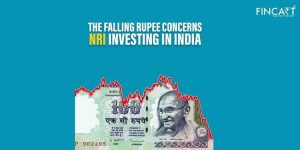Table of Contents
ToggleEveryone enters the market with one goal in mind – making profits. There are two ways of earning profits, through trading, or investment. Even though these terms are often used interchangeably, there is a big difference between them. Investors tend to play the long game and hold assets for years. Traders, on the other hand, look to maximise their returns every quarter, month, week, or even every day. Those who are new to the world of finance can get easily confused so let’s clear all confusion and take a detailed look at investing and trading. When you have a clear understanding of the working and the differences between the two, you will be able to determine which method suits you best. Let’s begin!
What are the Differences Between Investing and Trading?
Choosing between trading and investing depends on your financial goals, risk tolerance, and time horizon. Trading involves frequent buying and selling of assets for short-term gains, while investing focuses on buying and holding assets for long-term growth. Let us break down investing vs trading in detail;
| Features | Investing | Trading |
| Risk Tolerance | Since the strategy involves riding out the market’s ups and downs, not a lot of risk is involved in investing comparatively. | Because traders hold their assets for a shorter time to take advantage of small price changes, a higher risk is involved in trading. |
| Time Horizon | Investments are made for the long term, from years to decades. | Trading is done in the short term, from minutes to months, maybe years. |
| Objective | Investing aims to create wealth slowly over time. An investor will likely ignore market fluctuations. | A trader’s goal is to take advantage of market fluctuations to make quick profits. |
| Effort Required | Investors don’t have to spend too much time and energy to execute their plans. Sure they have to make the occasional portfolio adjustment. | Traders dedicate a lot of time and energy because they have to constantly buy and sell while keeping a close eye on the state of the market. |
| Involvement and Analysis | Investing doesn’t demand people to be very active. It’s a buy-and-hold strategy that requires a fundamental analysis of companies and assets. | Trading demands attention and active involvement because the time horizon is short. Traders have to make quick decisions and use technical analysis methods such as stochastic oscillators and moving averages. |
| Tax Liability | Since investments are held for a longer period, they are subject to Long Term Capital Gains Tax, which is 10% on equity-oriented investments if gains exceed Rs. 1 lakh. | Since it’s unlikely for a position to be held over a year while trading, any profits made are subject to Short Term Capital Gains Tax, which is 15% on equity-oriented investments. Generally, taxes paid by traders are higher compared to investors. |
What is Investing?
Understanding investing meaning is important. Investing is when you allocate your resources to assets and expect to make profits over the long term. When you invest you create your wealth slowly over time. Investing is done by building a portfolio with one or different kinds of assets such as mutual funds, bonds, and other avenues. Typically, long-term investors prefer stocks that show promise of return over several years, even decades, while traders in contrast are more likely to go for stocks that promise quick returns.
Fluctuations are inevitable given the perpetual changes in the markets and in such scenarios, investors often ride out the downturns as they expect that market prices will eventually recover which will allow them to make back any incurred losses.
Types of Investing
There are many approaches to investing. Investors need to know about these different types so that when they’re doing their investment planning, they can choose the methods that suit them best. Listed below are the four main types of investing:
Active Investing
As the name suggests, active investing is an involved approach to the management of an investment portfolio. Active investors study and analyse assets regularly to identify investment opportunities with potentially high returns and make decisions based on their findings. Investors actively engage in continuous decision-making, buying and selling assets to outperform the market. This approach can be expensive due to the many transaction costs and can be hard to master because the market is always changing and fluctuating.
Passive Investing
In contrast to the active approach, passive investing is more laid-back. This is a “set and forget” method which means investors buy assets and hold them for the long term. This approach is ideal for those who prefer a less involved approach. Unlike active investors, passive investors don’t regularly monitor and analyse the markets because they believe that the market will bounce back and they will eventually make back any losses in the long term. Compared to their active counterparts, they don’t have to pay as many transaction fees either because they don’t constantly restructure their portfolios.
Passive investors try to mimic the performance of a well-known benchmark index, such as the Nifty 50 or Sensex.
Value Investing
Imagine you’re out shopping and your eye catches a sale sign. You look at a phone that is heavily discounted and without a second thought, you buy it. You’re glad because you just got a great deal. When you feel you got a great deal, what’s happening is that you feel the price of the thing you bought was valued under what it should be. Value investing is like that. The investors who follow this approach identify undervalued stocks, and they believe the market has overlooked the stock’s true worth. Investors focus on the intrinsic value of a company, and buy stocks they think are undervalued compared to the intrinsic value. Warren Buffett is a well-known value investor.
Growth Investing
On the other hand, growth investing focuses on companies that have just started or are small but have high growth potential. This approach involves investing in growth stocks – stocks of businesses that are expected to grow rapidly, even if their current earnings are low and might not justify their stock prices. When compared to value investing, this approach carries higher risk because the companies are small and haven’t proven themselves yet, however, the returns can be potentially higher.
Also Read: What is Thumb Rules of Investing
What is Trading?
Trading is a more active and short-term approach to the markets compared to investing. Traders buy and sell assets like stocks, commodities, or currencies to profit from short-term price fluctuations. They make profits in one of two ways – They buy at a low price and sell at a high price, or by short selling, which means in falling markets they sell at higher prices and repurchase at lower prices.
Traders work within a time frame and they aim to profit within that set time frame, be it a day, week, or month. Even if a stock is less profitable, traders will use a stop-loss which is a way of managing risk. For example, if a stock is trading at Rs.100 and a trader sets a stop-loss order at Rs.90, the moment the price falls below Rs. 90, the stock is sold. This is done to avoid loss. Traders make quick decisions, monitor the market daily, and are very well-informed.
Types of Trading
Just like investing, there are various trading styles and each style is set apart by the holding period in which the assets are traded.
Day Trading:
This is also called intraday trading. Day traders buy and sell financial instruments within the same trading day, and no positions are held overnight. Their positions are closed before the market closes.
Swing Trading:
In this approach, traders hold positions from a few days to weeks. It’s called swing trading because traders try to capture the swings or price fluctuations that occur within a trend.
Position Trading:
In this approach, traders hold positions for weeks, months, or even years. When compared to day or swing trading, position trading as the name implies is a longer-term approach. Position traders aren’t as active and hands-on as other traders.
Scalp Trading:
This is the approach with the shortest-held positions. Scalpers hold positions for minutes and aim to make small profits on many trades over a day.
Also Read: Mutual Fund vs Stock Market Which is Better?
Conclusion:
So the main differences between investing and trading lie in the time horizon and the risk associated with the approaches. You might wonder which approach of the two is the best. There’s no real answer to that question because it’s not a question of which is better but rather which approach will suit you better.
If you are more risk-averse and don’t want to be actively engaged in the market, then investing will be better suited to you. If you’re someone who likes taking risks and likes to stay involved by constantly monitoring and analysing the market, trading is your approach. There is no right or wrong answer, just what one would prefer.
Traders have more knowledge about the workings of the markets, different types of assets, and the various analytical methods used in trading. Generally speaking, an average individual cannot compete with a trader in terms of finance knowledge.
In that case, investing is the strategy that would suit them best because they won’t have to put in a lot of time and effort, and can profit from compound interest in the long term. An investor gets the additional benefit of having an investment planner by his or her side, who can further optimise their strategy and help them secure financial freedom.




